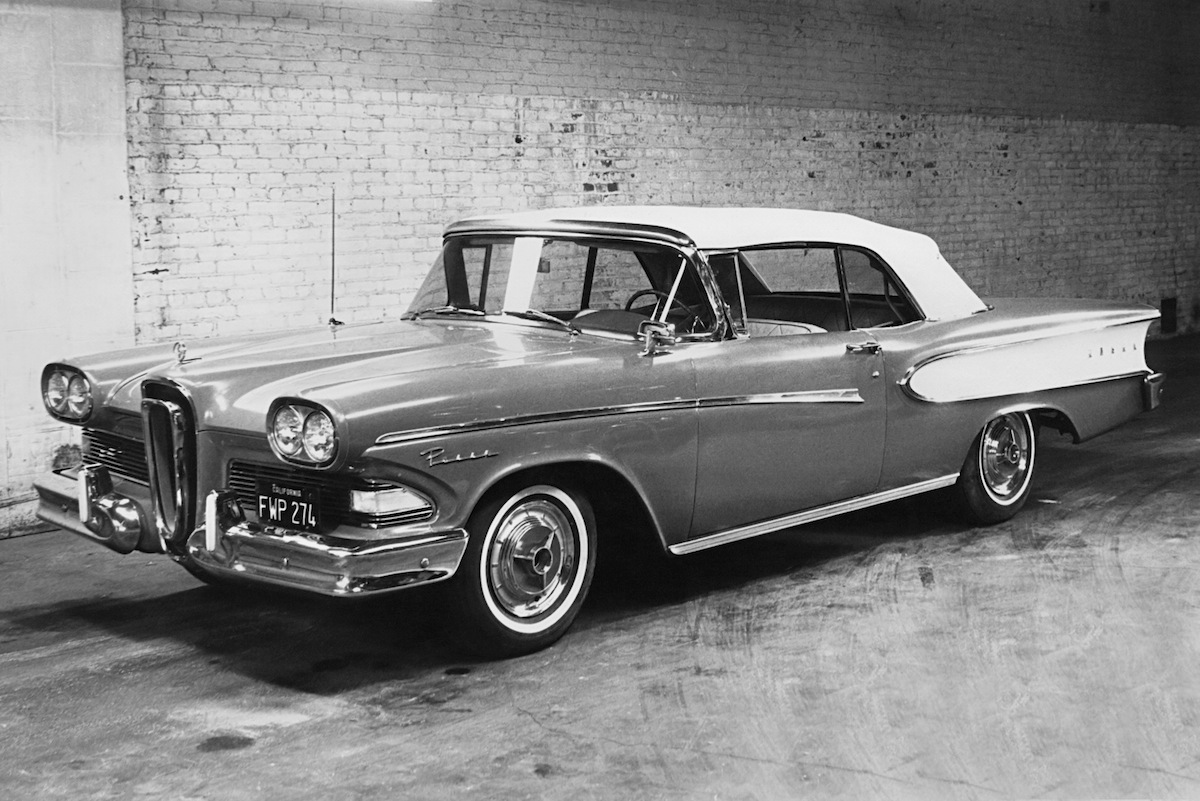
Any crossword puzzler knows there’s a five-letter word for a Ford that flopped: Edsel.
More from TIME
At the heart of any big flop–like when Ford ended the Edsel 55 years ago, on Nov. 19, 1959–lies high expectations. The Edsel was named after Henry Ford’s son, no small honor, and it had its own division of the company devoted to its creation. As TIME reported in 1957 when the car debuted, the company had spent 10 years and $250 million on planning one of its first brand-new cars in decades. The Edsel came in 18 models but, in order to reach its sales goals, it would have to do wildly better than any other car in 1957 was expected to do. The September day that the car first went on the market, thousands of eager buyers showed up at dealers, but before the year was over monthly sales had fallen by about a third.
When Ford announced that they were pulling the plug on the program, here’s how TIME explained what had gone wrong:
As it turned out, the Edsel was a classic case of the wrong car for the wrong market at the wrong time. It was also a prime example of the limitations of market research, with its “depth interviews” and “motivational” mumbo-jumbo. On the research, Ford had an airtight case for a new medium-priced car to compete with Chrysler’s Dodge and DeSoto, General Motors’ Pontiac, Oldsmobile and Buick. Studies showed that by 1965 half of all U.S. families would be in the $5,000-and-up bracket, would be buying more cars in the medium-priced field, which already had 60% of the market. Edsel could sell up to 400,000 cars a year.
After the decision was made in 1955, Ford ran more studies to make sure the new car had precisely the right “personality.” Research showed that Mercury buyers were generally young and hot-rod-inclined, while Pontiac, Dodge and Buick appealed to middle-aged people. Edsel was to strike a happy medium. As one researcher said, it would be “the smart car for the younger executive or professional family on its way up.” To get this image across, Ford even went to the trouble of putting out a 60-page memo on the procedural steps in the selection of an advertising agency, turned down 19 applicants before choosing Manhattan’s Foote, Cone & Belding. Total cost of research, design, tooling, expansion of production facilities: $250 million.
A Taste of Lemon. The flaw in all the research was that by 1957, when Edsel appeared, the bloom was gone from the medium-priced field, and a new boom was starting in the compact field, an area the Edsel research had overlooked completely.
Even so, the Edsel wasn’t a complete loss for Ford: the company was able to use production facilities build for Edsel for their next new line of, you guessed it, compact cards.
Read the full report here, in the TIME Vault: The $250 Million Flop
More Must-Reads from TIME
- Cybersecurity Experts Are Sounding the Alarm on DOGE
- Meet the 2025 Women of the Year
- The Harsh Truth About Disability Inclusion
- Why Do More Young Adults Have Cancer?
- Colman Domingo Leads With Radical Love
- How to Get Better at Doing Things Alone
- Michelle Zauner Stares Down the Darkness
Write to Lily Rothman at lily.rothman@time.com